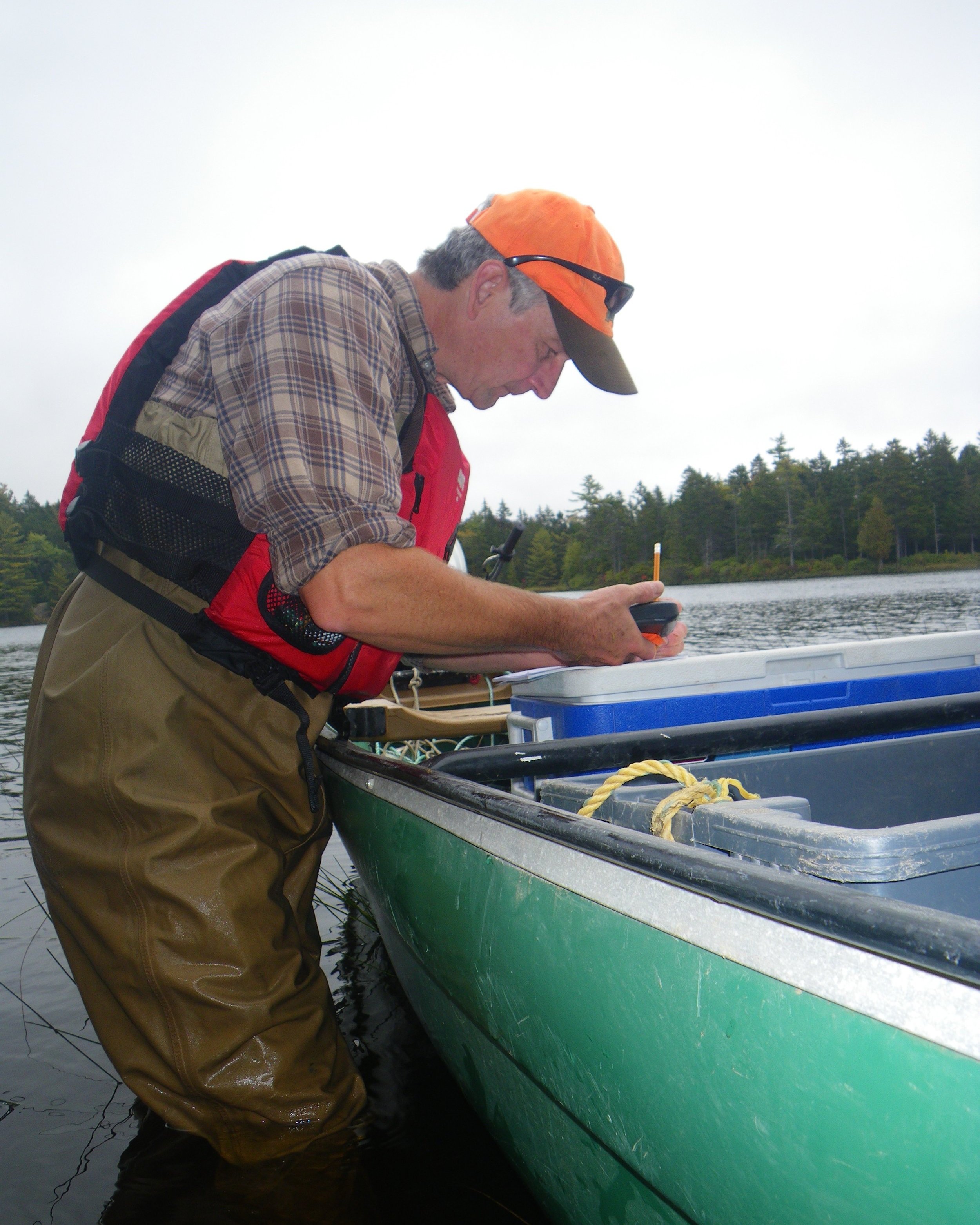Rod Bradford is an Aquatic Biologist with Fisheries and Oceans Canada.
Where did you grow up?
In Charlotte County, New Brunswick. My hometown is St. George, a small rural community located where the Magaguadavic River meets the Bay of Fundy. The Bay, with its diversity of marine life, and the inland waterways and hinterlands of the County were sources of much enjoyment and wonder while growing up.
What is a typical day like in your job?
Generally speaking, my daily work activities are organized around developing science advice on the status of the American eel and striped bass populations that exist within the inland and coastal waters of the Bay of Fundy, the Atlantic coast of Nova Scotia and Eastern Cape Breton. Depending upon the time of year I could be engaged in field sampling, compilation and analysis of fisheries statistics and abundance indices, cooperative research with non-government partners, report writing or attending meetings.
What do you enjoy most about your role?
The diversity and breadth of issues that need to be addressed, the opportunity to study aquatic organisms in natural settings, and interacting with the public.
Why do you think animal tracking is important?
Tracking helps to build a four-dimensional understanding of how animals that are otherwise not observable use aquatic habitats.
What is something most people may not know about American eel?
The intensity of recruitment of young eels (glass eels or elvers) from the ocean to rivers varies with the spring-neap tidal cycle. Daily run sizes are generally much larger on spring tides than neap tides. This pattern is a consequence of an innate (internal to the eels themselves) behaviour that results in the young eels being more active when tides are large.
How is your role with Apoqnmatulti’k different from other projects that you’ve been a part of?
My role with Apoqnmatulti’k is broadly consistent with my functions as a federal fisheries biologist in that I aim to offer objective, unbiased advice concerning the status of aquatic organisms, how well we understand their habitat usage and requirements and how human activities and climate may influence the well being of these organisms. Apoqnmatulti’k however aims to address conservation-oriented issues and concerns raised by Mi’kmaw and local community partners. The focus is on the relationship that has existed between communities and animals for millennia. I find it a fascinating exploration of value systems.
What does Apoqnmatulti’k mean to you?
Listening. Building trust. Respectful and constructive discussion of world views.
What is something new you’ve learned from this project in the past year?
I think of this more in terms of how the outcomes of the eel tracking to date in Minas Basin and Bras d’Or Lake affirm the astonishing capacity for this species to survive and thrive in virtually any wetted habitat accessible to them.
What are you most proud of with Apoqnmatulti’k?
How we became a team.
What do you like to do outside of work? (e.g. hobbies etc.)
When I am not reading I like to be outside and sometimes to hunt, to fish, to hike off beaten paths, to pick mushrooms, to search for fossils.




